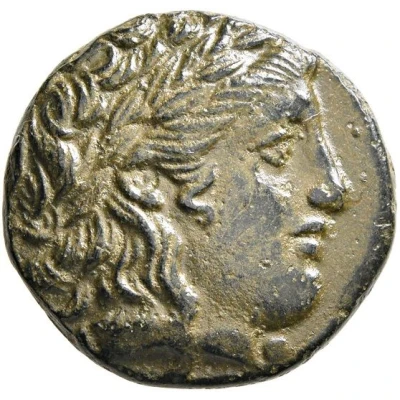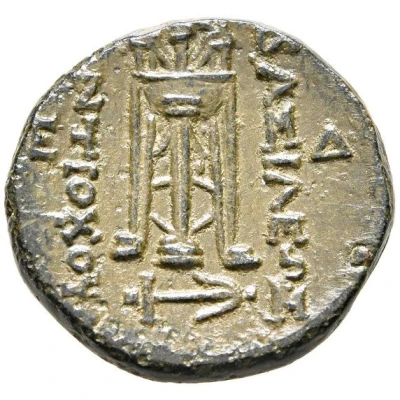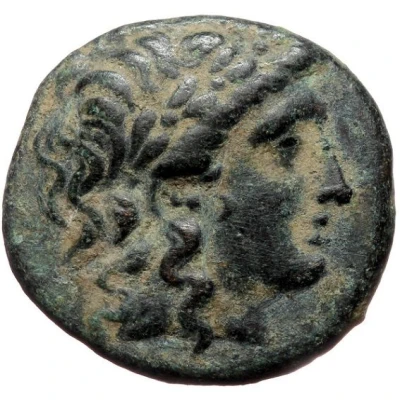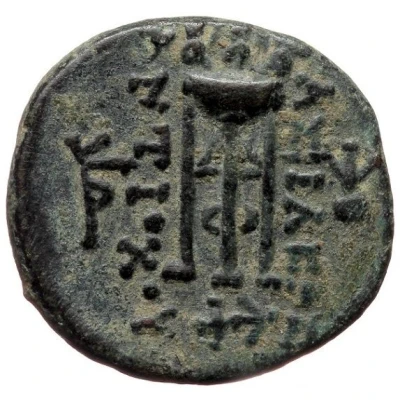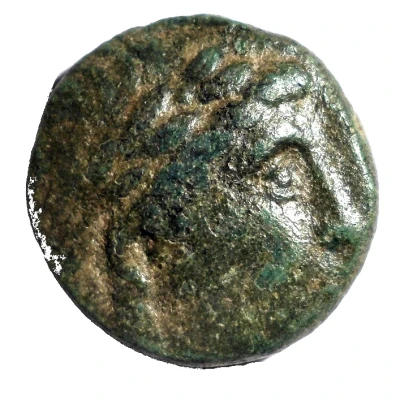
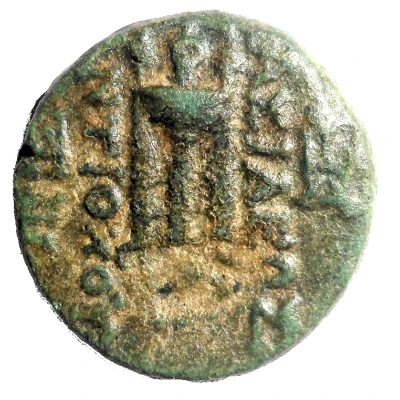

© Alfgard (CC BY-NC-SA)
Dichalkon - Antiochos II Sardes 261 BC - 246 BC
| Bronze | 4.2 g | 15 mm |
| Issuer | Seleucid Empire (Seleucid Empire (305 BC - 64 BC)) |
|---|---|
| King | Antiochos II Theos (261 BC - 246 BC) |
| Type | Standard circulation coin |
| Years | 261 BC - 246 BC |
| Value | Dichalkon (1⁄24) |
| Currency | Drachm |
| Composition | Bronze |
| Weight | 4.2 g |
| Diameter | 15 mm |
| Shape | Round (irregular) |
| Technique | Hammered |
| Orientation | Variable alignment ↺ |
| Demonetized | Yes |
| Updated | 2024-10-10 |
| Numista | N#155162 |
|---|---|
| Rarity index | 82% |
Reverse
Tripod of Delphi. Monogram in the right field. Monogram below the tripod.
Script: Greek
Lettering:
ΒΑΣΙΛΕΩΣ
ΑΝΤΙΟΧΟΥ
Translation: King Antiochos (II, Theos)
Interesting fact
One interesting fact about this coin is that it features a unique blend of Greek and Persian design elements. The obverse side of the coin depicts the king's bust, wearing a royal diadem, while the reverse side shows a seated Zeus, a common deity in Greek mythology. This fusion of styles reflects the cultural exchange and synthesis that occurred during the Seleucid Empire, which was a major power in the ancient Near East and Central Asia.
